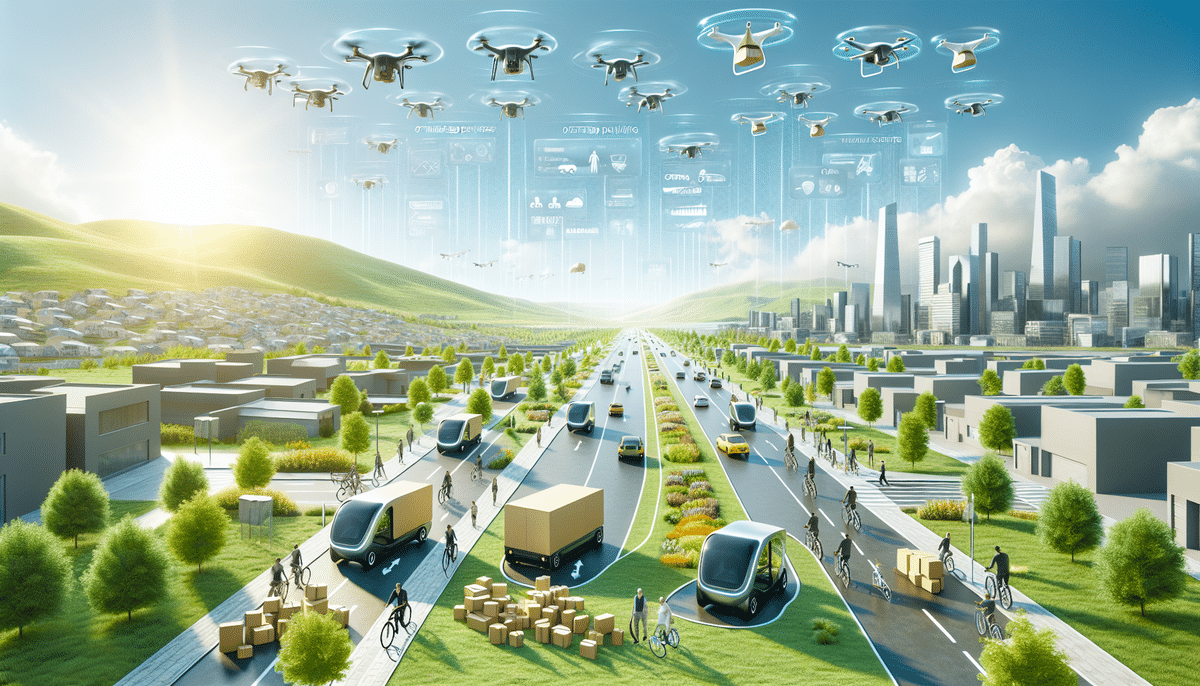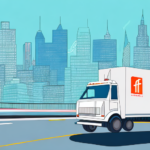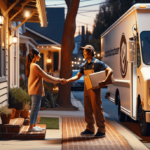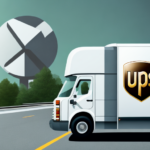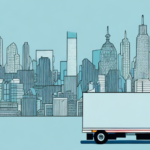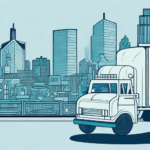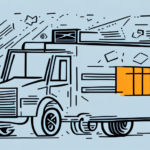Optimizing Last Mile Delivery for Maximum Efficiency
Last mile delivery is the final leg of the supply chain and is often the most critical and challenging part. It involves the delivery of packages, goods, or services from the transportation hub to their final destination, usually a residential or commercial address. The last mile delivery plays a vital role in the success of a business, and companies that do not optimize this aspect of their supply chain risk losing customers. In this article, we will explore the importance of last mile delivery in the supply chain, the challenges faced, and innovative solutions for optimizing this process.
The Importance of Last Mile Delivery in the Supply Chain
Last mile delivery is crucial to the success and survival of businesses involved in e-commerce, grocery, and food delivery. The customer's experience during this final phase of the delivery can either make or break a relationship with the business. If the customer does not receive the product on time or the delivery is not up to their expectations, they will not hesitate to switch to another business, which could lead to a significant loss in revenue for the business. Opting for an efficient last mile delivery strategy is essential in building brand loyalty, improving customer satisfaction, and maintaining a competitive edge in the market.
One of the biggest challenges in last mile delivery is the unpredictability of traffic and weather conditions. This can cause delays in delivery times and lead to dissatisfied customers. To combat this, businesses are turning to technology solutions such as route optimization software and real-time tracking systems. These tools help businesses plan the most efficient routes for their drivers, monitor traffic conditions, and provide customers with accurate delivery times. By leveraging technology, businesses can improve their last mile delivery operations and provide a better customer experience.
According to a 2023 Market Report, companies that effectively optimize last mile delivery can reduce delivery costs by up to 30% while increasing customer satisfaction rates.
Challenges Faced in Last Mile Delivery
Last mile delivery is challenging due to several factors, such as:
- Distance
- Traffic congestion
- Inefficient routes
- Multiple stops
- Unpredictable weather conditions
Additionally, delivery personnel face the challenge of handling large and bulky packages, which require additional resources and time. With the increasing demand for same-day and next-day deliveries, businesses must address these challenges and devise innovative solutions to optimize their last mile delivery processes.
One of the significant challenges in last mile delivery is the issue of package theft. With the rise of online shopping, package theft has become a common problem, especially in urban areas. Delivery personnel often have to leave packages unattended at the doorstep, making them vulnerable to theft. This not only results in financial losses for businesses but also leads to customer dissatisfaction. To tackle this issue, businesses are exploring various options such as installing secure lockers, partnering with local stores for package pick-up, and using smart technology to track packages and prevent theft.
Innovative Solutions for Last Mile Delivery Optimization
Several innovative solutions are available for optimizing last mile delivery, such as:
- Automation and robotics
- Predictive analytics
- Integrating customer feedback
Automation and robotics can enhance delivery speed and reduce errors by using self-driving vehicles and drones. Predictive analytics can anticipate demand, optimize delivery routes, and improve ETA accuracy. Integrating customer feedback can help businesses gain insights into their strengths and weaknesses and make improvements to their services. These solutions can help businesses overcome the challenges faced in last mile delivery and improve the overall delivery process.
Another innovative solution is the use of micro-fulfillment centers. These are small warehouses located in urban areas that allow for faster and more efficient delivery to customers in the surrounding area. By having inventory closer to the end customer, businesses can reduce delivery times and costs.
Additionally, the use of alternative delivery methods such as bike couriers and electric vehicles can help optimize last mile delivery. These methods are environmentally friendly and can navigate through congested urban areas more easily than traditional delivery vehicles. By using a combination of these innovative solutions, businesses can improve their last mile delivery operations and provide a better customer experience.
Automation and Robotics: Revolutionizing Last Mile Deliveries
The use of automation and robotics in last mile delivery has been gaining popularity in recent years. Self-driving vehicles and drones are used to deliver packages, food, and groceries to customers quickly and efficiently. Autonomous vehicles can travel long distances with minimal human intervention, while drones can deliver packages directly to customers' homes in hard-to-reach areas. These technologies can help reduce delivery times, lower fuel consumption, and reduce the carbon footprint.
Another benefit of using automation and robotics in last mile delivery is the reduction in delivery costs. With the use of self-driving vehicles and drones, companies can save on labor costs and reduce the need for human drivers. This can lead to lower delivery fees for customers and increased profitability for companies.
However, there are also concerns about the impact of automation and robotics on employment in the delivery industry. As more companies adopt these technologies, there may be a decrease in the number of jobs available for human drivers and delivery personnel. It is important for companies to consider the social and economic implications of these changes and work towards solutions that benefit both the industry and its workers.
Predictive Analytics for Efficient Last Mile Deliveries
Predictive analytics is an emerging technology that has the potential to revolutionize last mile deliveries. By analyzing vast amounts of data, including traffic patterns, weather conditions, and customer demand, predictive analytics can help optimize delivery routes, improve ETA accuracy, and reduce delivery and transportation costs. According to Statista 2023, businesses using predictive analytics have seen a 20% improvement in delivery efficiency.
This technology helps businesses stay competitive and meet demanding customer expectations by delivering products quickly and efficiently.
Integrating Customer Feedback to Enhance Last Mile Delivery Services
Integrating customer feedback is an essential aspect of optimizing last mile delivery. By tracking customer satisfaction and analyzing feedback, businesses can identify areas for improvement and make necessary changes to enhance their services. Feedback can be collected through surveys, social media, or review sites. By acting on customer feedback, businesses can create a positive customer experience, build loyalty, and achieve a competitive edge in the market.
Implementing a robust feedback mechanism allows businesses to continuously refine their delivery processes, ensuring that they meet evolving customer expectations.
The Role of Technology in Last Mile Delivery Optimization
Technology plays a crucial role in optimizing last mile delivery. With the increasing demand for same-day and next-day deliveries, businesses must adopt technologies such as GPS tracking, mobile apps, and real-time communication tools to streamline the delivery process. These technologies can help improve delivery times, efficiency, and accuracy while providing customers with a sense of control and visibility over their deliveries. The use of technology can also enhance customer experience and build long-term relationships with consumers.
For instance, ShipScience's Real-Time Tracking allows customers to monitor their deliveries in real time, reducing anxiety and increasing satisfaction.
Sustainable Last Mile Deliveries: A Step Towards Greener Transportation
Sustainability has become a critical aspect of last mile delivery operations. With the growing concern over carbon emissions and global warming, businesses must adopt sustainable last mile delivery practices to reduce their carbon footprint. Innovative solutions like electric vehicles, bike deliveries, and green rooftops can help reduce emissions and improve the environmental impact of last mile deliveries. According to a Global Logistics Report 2023, companies adopting sustainable practices have reduced their carbon emissions by up to 25%.
By adopting sustainable practices, businesses can contribute to a cleaner environment, meet sustainability goals, and enhance their brand reputation.
Strategies for Reducing Costs and Increasing Efficiency in Last Mile Delivery
Reducing costs and increasing efficiency in last mile delivery is crucial for businesses to maintain profitability and competitiveness. Businesses can adopt several strategies to achieve these goals, such as:
- Efficient route planning: Using advanced routing algorithms to determine the most efficient paths.
- Shared delivery services: Partnering with other businesses to share delivery resources.
- Optimizing warehouse locations: Placing distribution centers closer to high-demand areas.
- Leveraging technology: Utilizing software and analytics to streamline operations.
These strategies can help reduce transportation costs, optimize delivery times, and increase efficiency in last mile delivery operations.
The Future of Last-Mile Delivery: Trends and Predictions
The future of last mile delivery is exciting and full of potential. Emerging technologies like blockchain, artificial intelligence, and augmented reality are set to change the landscape of last mile deliveries. Blockchain can help improve transparency and security in the delivery process, while AI and augmented reality can enhance the customer experience and provide real-time feedback.
The future also holds the possibility of entirely autonomous deliveries with self-driving vehicles and drones. According to a McKinsey Report, autonomous deliveries could account for 30% of last mile deliveries by 2030. These trends and predictions indicate that last mile delivery will continue to evolve and become more efficient in the years to come.
Case Studies: Successful Implementations of Optimized Last-Mile Delivery Systems
Several businesses have implemented optimized last mile delivery systems and achieved impressive results. For instance, Amazon's delivery network uses a combination of robotics, predictive analytics, and automated vehicles to streamline their last mile delivery. By doing so, they have reduced delivery times and costs, improved efficiency, and gained a competitive edge in the market.
Other businesses like UPS, FedEx, and DHL have also implemented similar strategies, resulting in improved customer experience and increased profitability.
Building a Collaborative Ecosystem for Seamless Last-Mile Deliveries
The last mile delivery process involves several stakeholders, including suppliers, transportation providers, delivery personnel, and customers. To optimize the process, businesses must build a collaborative ecosystem that fosters communication and coordination among these stakeholders. By doing so, businesses can improve the accuracy of ETAs, optimize delivery routes, and reduce the time and costs associated with transportation.
A collaborative ecosystem can also result in a better customer experience and improved efficiency in the last mile delivery process. For example, partnerships between delivery companies and local retailers can facilitate quicker pick-ups and drop-offs, enhancing overall service quality.
The Impact of COVID-19 on Last-Mile Deliveries and the Way Forward
The COVID-19 pandemic has brought unprecedented challenges to last mile deliveries. With the surge in demand for online purchases, businesses have struggled to keep up with the increasing demand for deliveries. Despite these challenges, businesses have leveraged technology and innovative strategies to overcome obstacles and ensure timely deliveries during the pandemic.
The pandemic has also accelerated the adoption of contactless deliveries, further emphasizing the importance of technology in last mile deliveries. According to a 2023 Industry Analysis, 60% of consumers prefer contactless delivery options post-pandemic.
As the pandemic continues, businesses must continue to innovate and adapt to the changing landscape of last mile deliveries to meet evolving customer expectations.
Best Practices for Improved Customer Experience in Last-Mile Deliveries
Improving customer experience is paramount for the success of last mile delivery operations. By adopting best practices that prioritize the customer's needs, businesses can create a positive experience and build brand loyalty. Some best practices include:
- Providing accurate ETA information
- Offering flexible delivery options
- Providing real-time tracking
- Building a customer-centric ecosystem
These practices can help improve the customer experience, increase satisfaction, and enhance the overall profitability of the business.
Conclusion
Optimizing the last mile delivery process is a critical aspect of the supply chain that can significantly impact the success and survival of a business. Businesses that adopt innovative solutions and best practices to improve last mile delivery can gain a competitive edge in the market, enhance the customer experience, reduce transportation costs, and improve sustainability. With the future of last mile deliveries looking bright, businesses must continue to innovate and adapt to stay ahead of the curve.













